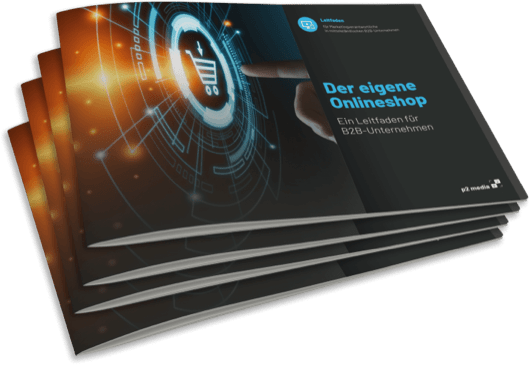For years, the number of mobile Internet accesses has been increasing, so that Google already exclusively takes the mobile variants of websites into account for its ranking. The increased use of smartphones and tablets is also accompanied by a steady increase in so-called voice searches. This is hardly surprising, as portable end devices offer the best conditions here and they are also not infrequently used as quick helpers. When users need or want information promptly on the go or between two appointments, one speaks of so-called micro moments in relation to voice search. Here, a verbal input of applicable terms is usually the first option. The importance of voice input is also increasing beyond Google search. More and more people are using voice-based assistants such as Alexa, Siri or Cortana - and chatbots can now also be controlled by voice. While voice search and thus the consideration of corresponding features do not (yet) have the SEO relevance of mobile capability as well as other central ranking factors. However, they can have a significant impact on the practically all-embracing SEO-important user experience. Since the frequency of voice searches is expected to increase in the coming years and it cannot be ruled out that Google will sooner or later focus more on voice searches, B2B marketing is well advised to start using voice search SEO now or to integrate the relevant options into your SEO strategy and, last but not least, your B2B sales strategy. This article provides an overview of the most important correlations.
Interrelationship of the different voice search systems
In order to efficiently consider voice search in your marketing SEO strategy, to effectively increase the user experience and ultimately to give your website's ranking a significant push, you first need to know the exact context. The term "voice search" encompasses all processes that involve a "search", i.e. a search by voice via a digital voice assistant. The voice-search-enabled device recognizes and analyzes the user's query and then delivers a response. In most cases, the latter is based on the results of a search engine. However, voice search can also be performed independently of Google and Co., i.e. website- or system-internally. Currently, the best-known and most-used voice assistants are Google Assistant, Apple's Siri and Amazon's Alexa. Systems can generally be distinguished between mobile or web stationary and physically stationary assistants. The mobile and web variants are installed as an app on a device and/or can be used via a browser. Physically stationary search assistants come in the form of smart speakers, such as Amazon Echo and Google Home. In addition, so-called voice chatbots, i.e. chatbots that can be used not only textually but also on a linguistic level, can also be assigned to the voice search sector. Here, it is usually also about answering search queries.
Voice Search Systems for B2B Marketing SEO Strategy
In the context of Google Voice Search, the situation is comparatively clear. Because of course this is used to query information, products for purchase, entertainment, etc. via the search service of the group. With an increased volume of such Google searches, there is of course increased relevance to operate corresponding SEO. But other systems, such as Siri or Alexa, also make use of search engines for web searches. Thus, in connection with a factually also increasing use of these options, there is again considerable SEO relevance. When you do voice search B2B SEO, you are primarily playing out special voice search content, which Google and other search engines can ideally interpret as suitable for such search queries and then recognize by corresponding search assistants as well as accurately pass on to the end user. Even website-internal voice chatbots play an important role in terms of search engine optimization when used correctly. So far, these have only had a direct influence on the findability of your content via voice search systems such as Alexa or Siri in very special contexts - keyword "Google Actions". Nevertheless, you ideally already raise the quality of the user experience of your website, which benefits from a general advantage in the ranking. Moreover, you (still) have an enormous unique selling proposition potential and can bring an immense economization of sales-specific processes as part of your B2B sales strategy. The latter is particularly evident in a significant support relief for your employees and the chance to still(/even) offer fast and convenient interaction around the clock.
What are the general requirements for voice search optimization?
Google and Co. are increasingly focusing on Internet users and their user experience. Accordingly, it is also important for you as a website operator to increasingly focus on the concerns of your users and the user intent, i.e. their search intention. In terms of voice search, the latter is strongly oriented towards the so-called micro moments, in the context of which voice search is used particularly frequently. So find out in which situations and for which concerns your customers or partners primarily use voice search and base your voice search optimization on this. Of course, the general challenges or needs of your (potential) customers that you can solve with your business services must always be kept in mind as well. Value-added content and the right keywords or keyword strategy are always crucial here. But also on a technical level an optimal user experience should be offered. Pagespeed and structured data are of particular importance here.
Which concrete measures are absolutely to be adopted for Voice Search B2B SEO?
Of course, we cannot provide you with a comprehensive SEO strategy for every voice search optimization within this framework. There are simply too many individual factors to be assumed for an appropriate alignment. However, the basic requirements for Voice Search B2B SEO listed above should be considered in any case. For those who would like to gain a deeper insight into the corresponding correlations, we have once again specified the most important SEO measures below.
Keywords or keyword ranking is - as with conventional SEO - also extremely important in terms of voice search B2B SEO. In the latter context, the research ideally focuses primarily on informational long-tail keywords that relate to complete questions. This is because voice searches are usually much more specific and formulated more naturally than textual entries. In order to determine the appropriate voice search keywords, you have various options. On the one hand, well-known SEO tools, such as Google's Keyword Planner, can help you. Using this tool, you can request further suggestions for potentially useful keywords when entering your main keywords. On the other hand, there are also much more differentiated SEO tools that give you suitable question keywords for topic-specific W-questions, such as AnswerThePublic. W-questions occur with above-average frequency in relation to voice search and are accordingly highlighted by Google and other search engines within the content. In combination with keywords, which are still essentially used by the search services to assign content to search queries, this fact is of course particularly interesting. Further information on keywords and W-questions are provided by interactions of (potential) customers in social networks and, last but not least, competitors. Look at which topics are treated or discussed particularly prominently there with which keywords and appear in the search results. Here, too, there are numerous SEO tools that make the analysis much easier for you. The Sistrix Optimizer is certainly one of the most popular and powerful solutions on the market.
After the keywords have been matched, it is important to produce content that covers the own target group as optimally as possible. This can only be achieved comprehensively if all relevant customer questions and answers as well as other concerns and solutions related to the products or services sold are taken into account in the content. Especially the W-questions, which are important in the context of Micro Moments, often cannot be integrated naturally into the text flow. In this respect, it is advisable to work with a FAQ list and to summarise the central questions and answers to the respective main topic of a page in a compact way for the users and not least the search engines. The good readability of texts is extremely important. Because these are not only transmitted to the users by the voice search assistants, but also read out loud, they must be understandable for both sides. When creating such texts, it is best to use the natural language or wording of the (potential) customers and to rely on generally simple formulations. If you do everything right here and offer Google the best conditions overall to interpret your texts correctly, corresponding content - or excerpts from it - may appear as featured snippets in the search results. These are information fields above the organic results - on position 0, so to speak. According to a study by SEMrush, 70 percent of all voice search responses actually come from such featured snippets. It is imperative to keep in mind that when answering voice searches, no alternatives are output by the assistants - there is only one result. So if there is still a good chance of getting your content to the target group in a conventional text search even if you do not have the featured snippet for the relevant keywords, i.e. if you rank below them, the situation is quite different in a corresponding voice search. Here, the snippet is preferred in most cases.
Especially in the course of micro moments, voice search assistants must be able to quickly and accurately understand which content is potentially particularly relevant for a corresponding query and should be prominently passed on to the user. This can only be guaranteed if content - as described in the previous section - is easy to understand. In addition to content clarity, there must be a structure that is as easy to follow as possible. To optimise this prerequisite, you can additionally prepare your content using structured data. By the way, these not only contribute to the better comprehensibility of your pages by Google and Co., but also increase the chance of receiving featured snippets under ideal implementation. With Schema.org, the search engines themselves have created a standard for the markup of structured data. In the process, or in the course of preparing content with structured data, three approaches are to be distinguished: Microdata, RDFa and JSON-LD. The latter method is currently the most common and is also recommended by Google. Thus, it clearly has the greatest relevance in terms of Voice Search B2B SEO. The basis for JSON-LD is JavaScript. Corresponding scripts are usually integrated in the head of the respective pages. They hold a variety of information for the search engine, such as the name of the organization, contact details and more. For maximally effective voice search SEO, special structured data is again helpful. For example, the "speakable" property can be used to determine or recommend which content is particularly suitable for voice search output. On its own, "speakable" does not (yet) lead to success, but in combination with other markups as well as in the correct interpretation of sequences, it is one of the most important tools to clearly show search engines which content is relevant for voice search or to subject the services to a targeted, purposeful SEO manipulation.
Another technical factor that has a significant impact on voice search B2B SEO is pagespeed. Since summer 2018, the loading speed of pages officially counts as one of Google's ranking factors. Voice Search is often used precisely when time is short. Micro Moments require a fast output of information, products or even entertainment values. Of course, search engines can only serve these if the content-supplying websites also respond quickly. For example, if a page needs 5 or more seconds before the first content is ready for use, this can already be interpreted as very negative in the context of a voice search. Considering that voice searches primarily originate from mobile devices, which are still generally less powerful than desktops and often have to work at slower internet speeds, pagespeed becomes even more relevant. One of the central intentions of Google to appoint the loading speed to a real ranking factor actually concerned exactly these requirements of mobile devices. From now on, these devices should no longer be disadvantaged or the fluid usability of websites on them should be pushed. One thing is certain: Pagespeed optimization not only brings advantages in voice search optimization, but likewise in conventional SEO. There are actually immensely many approaches with the help of which loading times can be effectively improved. Among the most efficient are the Gzip compression of entire websites, the reduction of image sizes, lazy loading, where only the images that are visible to the user are loaded, the avoidance of scripts and styles in the HTML, caching, i.e. practically storing the usage status of a page, the reduction to the essentials and, last but not least, fast servers.
Our support around the topic of search engine marketing
- Analysis of how you perform from the perspective of the search engine and what reputation your pages have.
- Development of anSEO strategy for your website or online shop.
- SEO site check as a status analysis to uncover technical errors and create a basis for necessary onpage optimizations.
- SEO-compliant text creation- conception of content that is classified as relevant by both your target groups and the search engine.
For holistic and successful online marketing, we are also happy to take care of the following topics:
Oliver Parrizas will be happy to answer any questions you may have on the subject. +49-800-911-91-91







